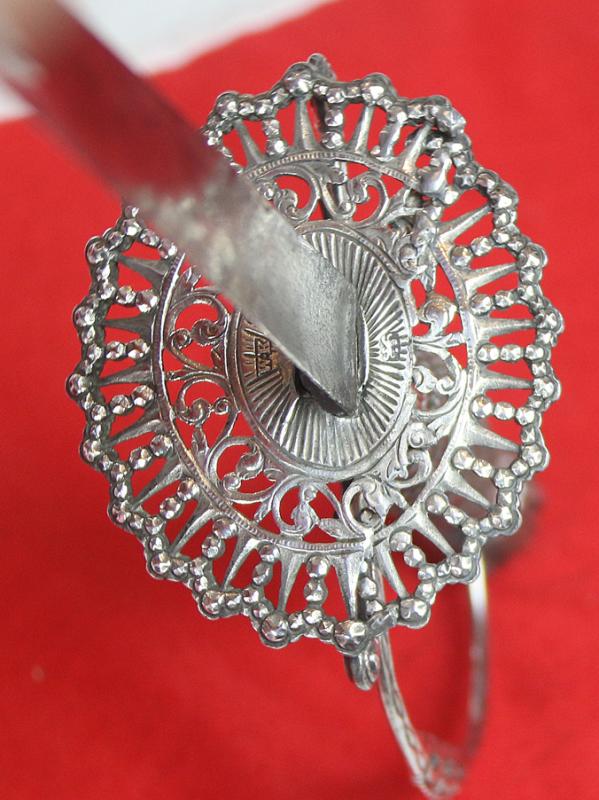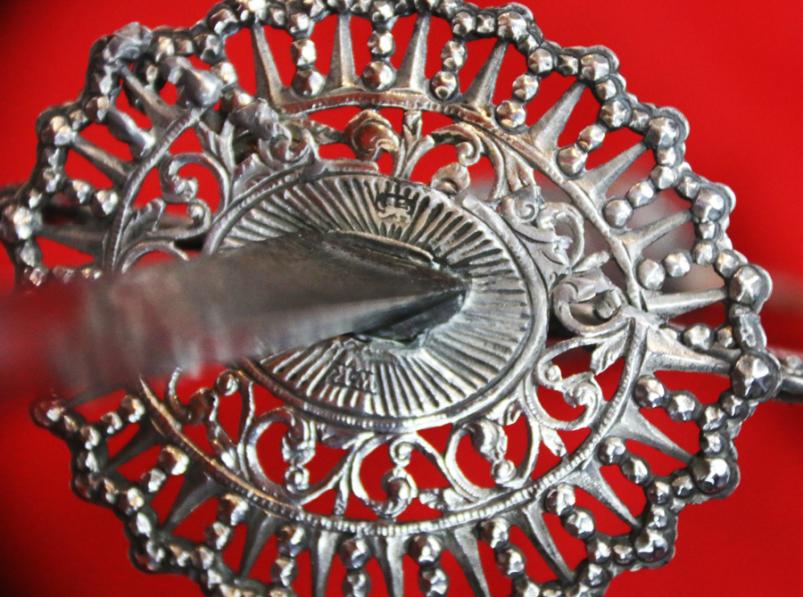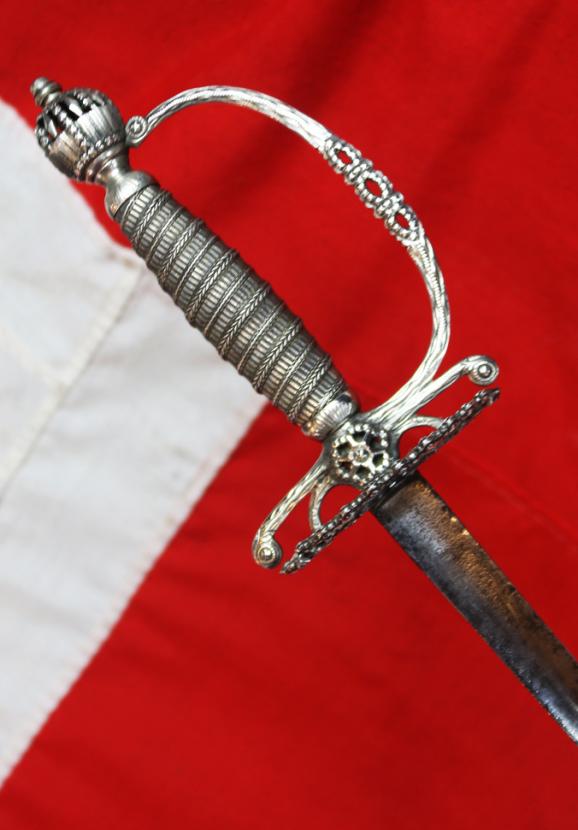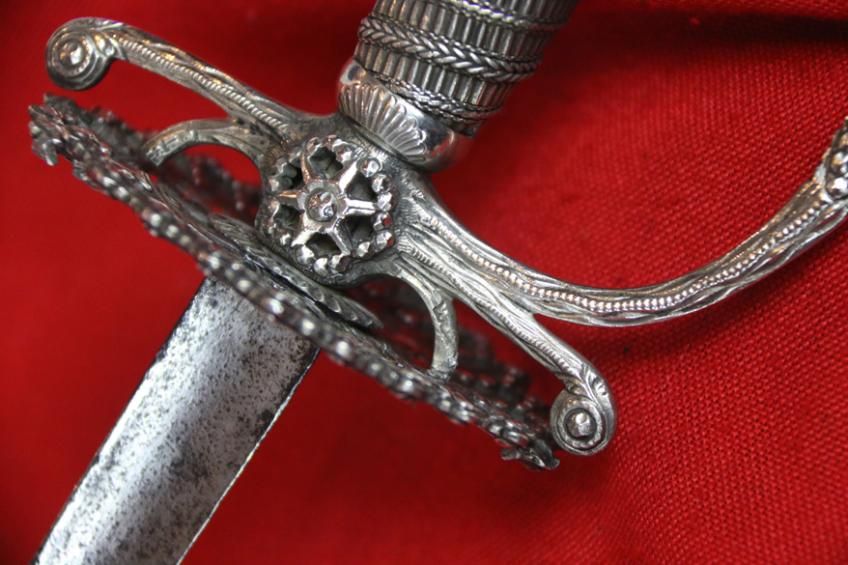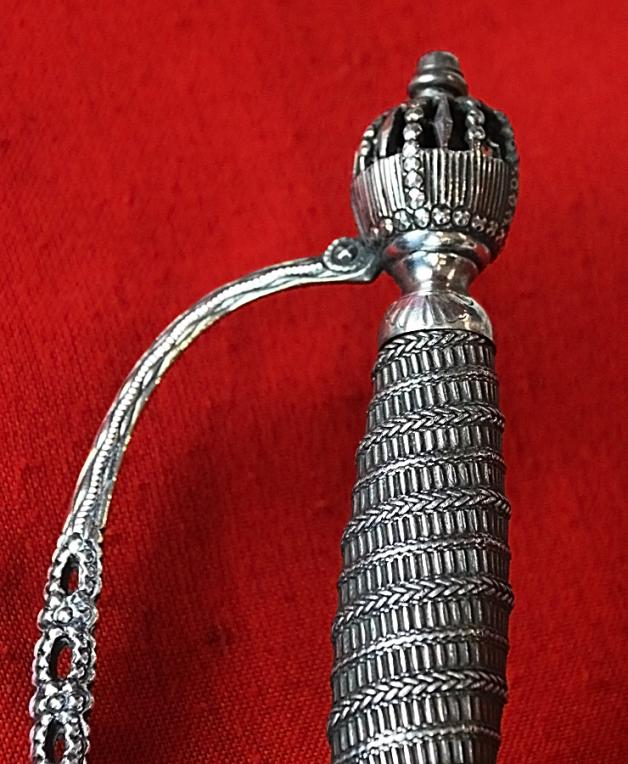18th Century 1770's Hallmarked Silver Hilted American Revolutionary War Period Officer's Sword Used By Both American and British Officers. Made by William Kinman of London
A fabulously intricate pattern of hilt with a complex geometric piercing with arabesque scrolling and cut stone patterning. It is sometimes referred to as the Boulton pattern, named after Matthew Boulton a renown London silversmith of the 18th century. The grip has silver banding interspersed with a herringbone pattern twisted silver wire. William Kinman was a leading member of the Founders Company of London was born in 1728 and is recorded as a prominent silver hilt maker. He is recorded at 8 Snow Hill for the last time circa 1781, is recorded circa 1728-1808, [see L. Southwick 2001, pp. 159-160.]. The small sword or smallsword is a light one-handed sword designed for thrusting which evolved out of the longer and heavier rapier of the late Renaissance. The height of the small sword's popularity was between mid 17th and late 18th century. It is thought to have appeared in France and spread quickly across the rest of Europe. The small sword was the immediate predecessor of the French duelling sword (from which the épée developed) and its method of use—as typified in the works of such authors as Sieur de Liancour, Domenico Angelo, Monsieur J. Olivier, and Monsieur L'Abbat—developed into the techniques of the French classical school of fencing. Small swords were also used as status symbols and fashion accessories; for most of the 18th century anyone, civilian or military, and with gentlemanly status would have worn a small sword on a daily basis.
The small sword could be a highly effective duelling weapon, and some systems for the use of the bayonet were developed using the method of the smallsword as their foundation, (including perhaps most notably, that of Alfred Hutton).
Militarily, small swords continued to be used as a standard sidearm for infantry officers. In some branches with strong traditions, this practice continues to the modern day, albeit for ceremonial and formal dress only. The carrying of swords by officers in combat conditions was frequent in World War I and still saw some practice in World War II. The 1913 U.S. Army Manual of Bayonet Drill includes instructions for how to fight a man on foot with a small sword. Small swords are still featured on parade uniforms of some corps.
As a rule, the blade of a small sword is comparatively short at around 0.6 to 0.85 metres (24 to 33 in), though some reach over 0.9 metres (35 in). It usually tapers to a sharp point but may lack a cutting edge. It is typically triangular in cross-section. This sword's blade is approx 33 inches long. I its working life the pierced oval guard has been damaged, re-affixed and repaired
A sword by this maker with a very similar hilt is preserved in the Royal Armouries Leeds, IX.3782. See Southwick 2001, p. 290-1 pls. 75-7
Code: 23950
2295.00 GBP




